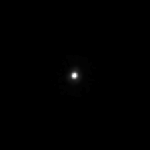(307261) 2002 MS4
| Demi-grand axe (a) |
6,272 7 × 109 km (41,63 ua) |
|---|---|
| Périhélie (q) |
5,386 1 × 109 km (35,53 ua) |
| Aphélie (Q) |
7,159 4 × 109 km (47,74 ua) |
| Excentricité (e) | 0,146 6 |
| Période de révolution (Prév) |
98 140 ± 16 j (268,69 a) |
| Vitesse orbitale moyenne (vorb) | 4,58 km/s |
| Inclinaison (i) | 17,693° |
| Longitude du nœud ascendant (Ω) | 216,04° |
| Argument du périhélie (ω) | 215,6° |
| Anomalie moyenne (M0) | 214,66° |
| Catégorie |
Cubewano (MPC)[2] Objet épars (DES)[3] |
| Satellites connus | 0 |
| Dimensions |
934 ± 47 km[4] 726 ± 123 km[5] |
|---|---|
| Classification spectrale | B-V=0,69 ; V-R=0,38[6] |
| Magnitude absolue (H) | 3,8[1] |
| Magnitude apparente (m) | 20,6[7] |
| Albédo (A) |
0,051+0,036 −0,022[4] 0,084+0,03 −0,02[5] |
| Température (T) | ≈43 K |
| Plus ancienne observation de pré-découverte | |
|---|---|
| Date | 18 juin 2002[8] |
| Découvert par |
Chadwick Trujillo, Michael E. Brown |
| Lieu | Palomar |
| Désignation | 2002 MS4 |
(307261) 2002 MS4 est un gros objet transneptunien, classé comme planète naine potentielle.
Description[modifier | modifier le code]
Il fut découvert en 2002 par Chadwick Trujillo et Michael E. Brown. Il est classé comme cubewano par le Centre des planètes mineures[2].
Le site web de Mike Brown le classe comme planète naine quasi certaine[9]. Le télescope spatial Spitzer a estimé son diamètre à 726 ± 123 km[5]. L'équipe d'Herschel l'estime quant à elle à 934 ± 47 km, ce qui en ferait un des dix plus grands objets transneptuniens actuellement connus[4], et largement assez grand pour être accepté comme planète naine selon la proposition provisoire de 2006 de l'UAI[10]. Il est actuellement à 47,2 UA du Soleil[7], et passera au périhélie autour de 2122[1].
Il a été observé 55 fois, avec des images de pré-découverte remontant à 1954[1].
Depuis le nommage de (225088) Gonggong le , 2002 MS4 est le plus gros objet connu du système solaire sans nom propre.
Compléments[modifier | modifier le code]
Articles connexes[modifier | modifier le code]
Liens externes[modifier | modifier le code]
- (en) Caractéristiques et simulation d'orbite de 307261 dans la JPL Small-Body Database.
- 2002 MS4 Precovery Images
- (en) Minor Planet Center database
Bibliographie[modifier | modifier le code]
- F. L. Rommel et al., « A large topographic feature on the surface of the trans-Neptunian object (307261) 2002 MS4 measured from stellar occultations », Astronomy & Astrophysics, (arXiv 2308.08062)
Références[modifier | modifier le code]
- (en) « JPL Small-Body Database Browser: (2002 MS4) », 3 mai 2008 last obs (consulté le )
- (en) « MPEC 2009-P26 :Distant Minor Planets (2009 AUG. 17.0 TT) », IAU Minor Planet Center, (consulté le )
- (en) Marc W. Buie, « Orbit Fit and Astrometric record for 307261 », SwRI (Space Science Department), 3 mai 2008 using 46 of 46 observations (consulté le )
- (en) Vilenius, E., Kiss, C., Mommert, M. et al., « "TNOs are Cool": A survey of the trans-Neptunian region VI. Herschel/PACS observations and thermal modeling of 19 classical Kuiper belt objects », (consulté le )
- Stansberry, Grundy, Brown, Spencer, Trilling, Cruikshank, Luc Margot Physical Properties of Kuiper Belt and Centaur Objects: Constraints from Spitzer Space Telescope (2007) Preprint arXiv
- (en) Stephen C. Tegler, « Kuiper Belt Object Magnitudes and Surface Colors », (consulté le )
- (en) « AstDyS 2002MS4 Ephemerides », Department of Mathematics, University of Pisa, Italy (consulté le )
- (en) « MPEC 2002-W27 : 2002 MS4, 2002 QX47, 2002 VR128 », IAU Minor Planet Center, (consulté le )
- (en) Michael E. Brown, « How many dwarf planets are there in the outer solar system? (updates daily) », California Institute of Technology (consulté le )
- (en) O. Gingerich, « The Path to Defining Planets » [PDF], Harvard-Smithsonian Center for Astrophysics and IAU EC Planet Definition Committee chair, (consulté le )


